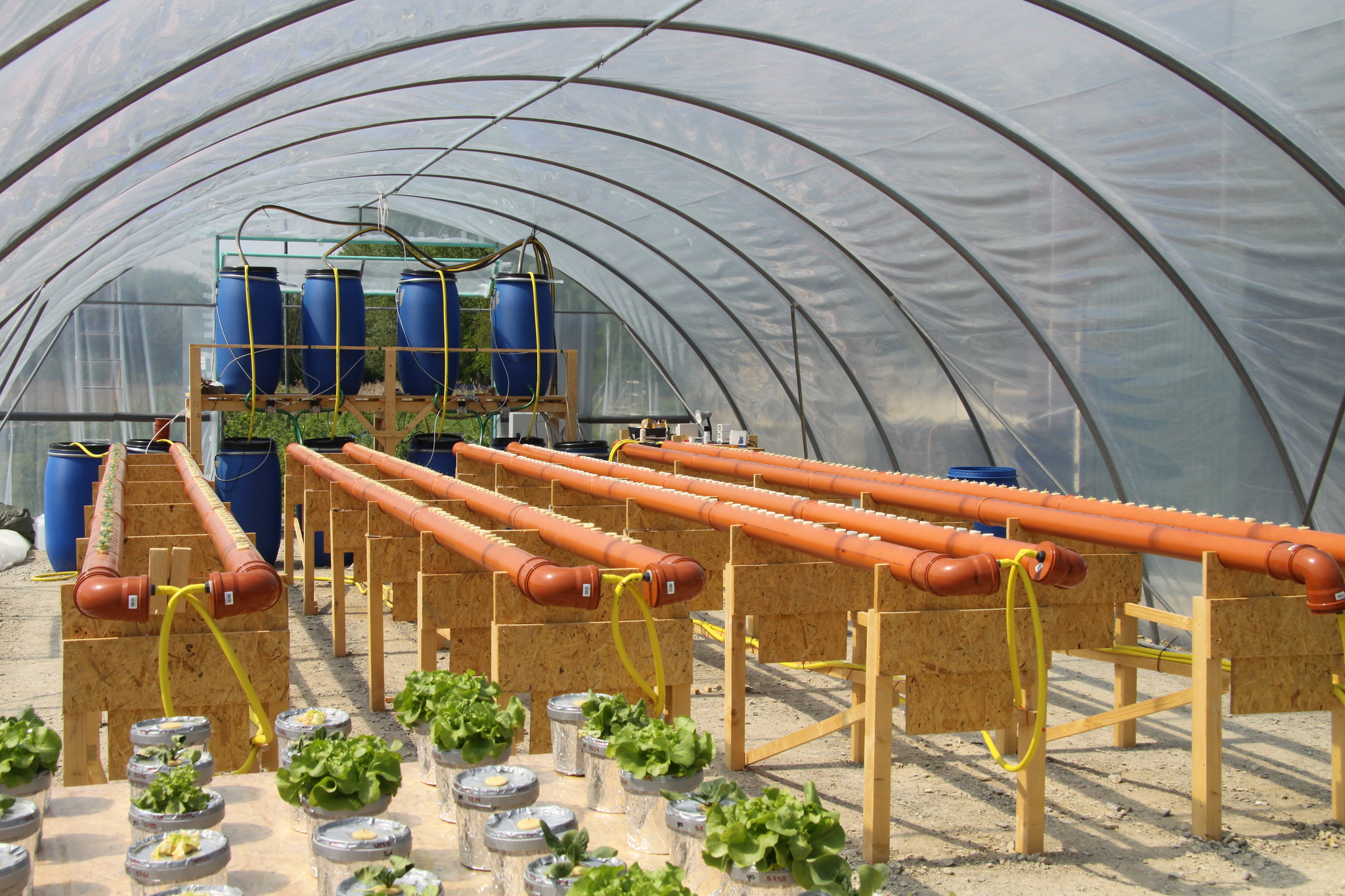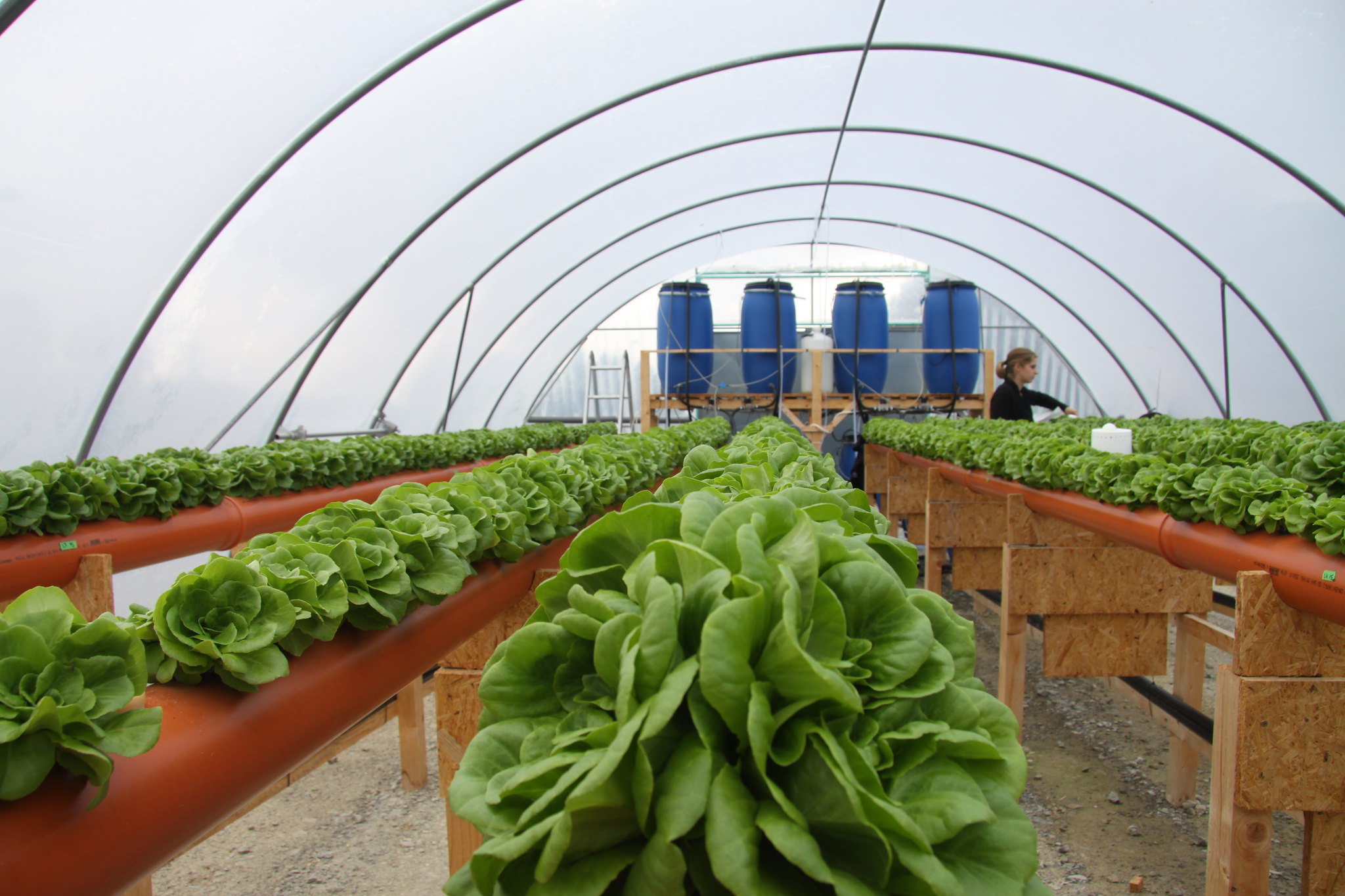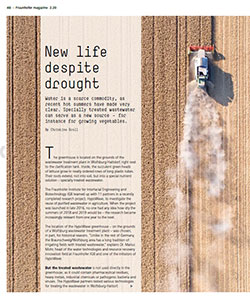Water is a scarce commodity, as recent hot summers have made very clear. Specially treated wastewater can serve as a new source – for instance for growing vegetables.
How can purified wastewater be used for agricultural purposes? Researchers at the Fraunhofer Institute for Interfacial Engineering and Biotechnology IGB examined this question with 11 partners through the recently concluded HypoWave research project, using a greenhouse located on the grounds of the wastewater treatment plant in Wolfsburg-Hattdorf, right next to the clarification tank. But the treated wastewater is not used directly in the greenhouse, as it could still contain pharmaceutical residues, heavy metals, industrial chemicals or pathogenic bacteria and viruses. The HypoWave partners tested various technologies for treating the wastewater. Ozonation and using an activated carbon biofilter proved to be particularly effective. “We did not detect elevated concentrations of pharmaceutical residues or pathogenic germs in the lettuce we irrigated with water from the activated carbon biofilter,” says Marius Mohr, head of the water technologies and resource recovery innovation field at Fraunhofer IGB and one of the initiators of HypoWave.
To get their new technology into applications as quickly as possible, the Fraunhofer researchers investigated the levels of interest and acceptance in various regions by bringing together wastewater associations, farmers and sellers. There was a great deal of interest in Weissenberge in the district of Gifhorn, where one farmer is so impressed with the project that he is prepared to invest in a greenhouse. The Gifhorn wastewater association also plans to invest, as it expects the project to yield cost savings. The wastewater from Weissenberge, a town with a population of around 500, is currently fed into a treatment pond, where it stays for about 90 days before being discharged into a stream. The long-term plan is to connect the municipality to a wastewater treatment plant, which requires major investments. “If we succeed in significantly reducing the nutrients in the effluent from the treatment pond in the hydroponic greenhouse by using them as a fertilizer, Weissenberge wouldn’t need to be connected to a wastewater treatment plant,” explains Mohr. He plans to team up with some local partners there in a follow-up project, HypoWave Plus, to explore how that could be done.


